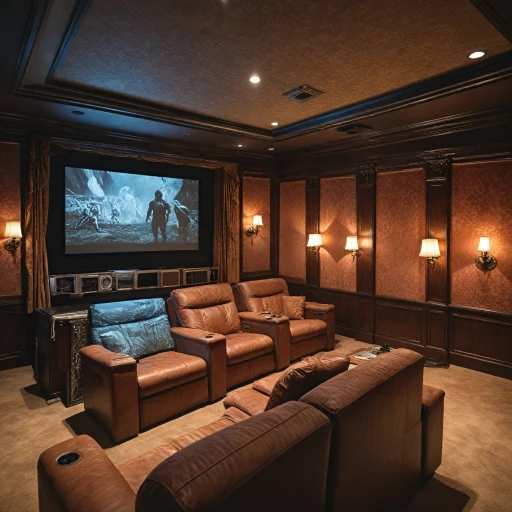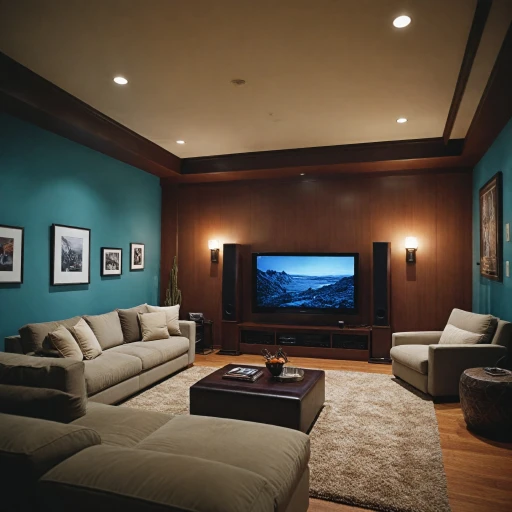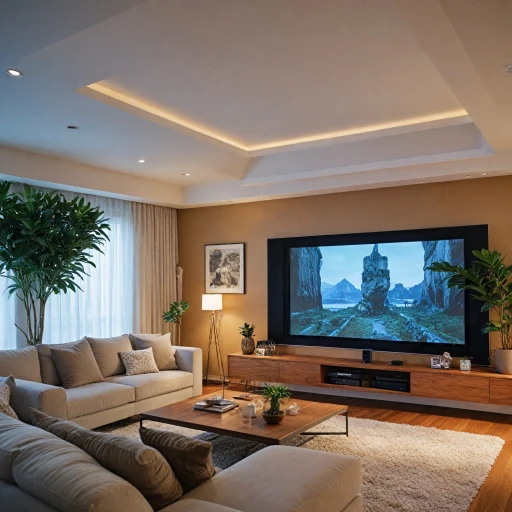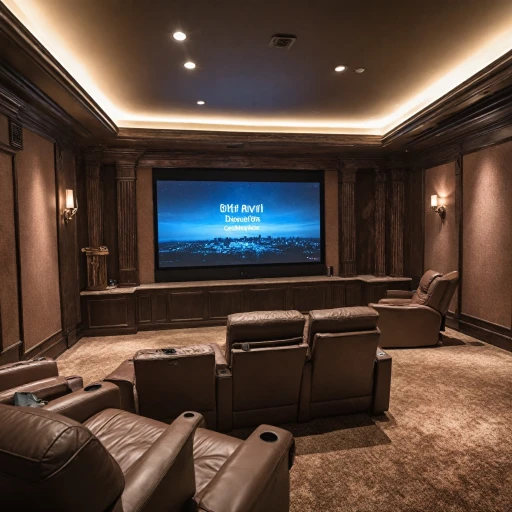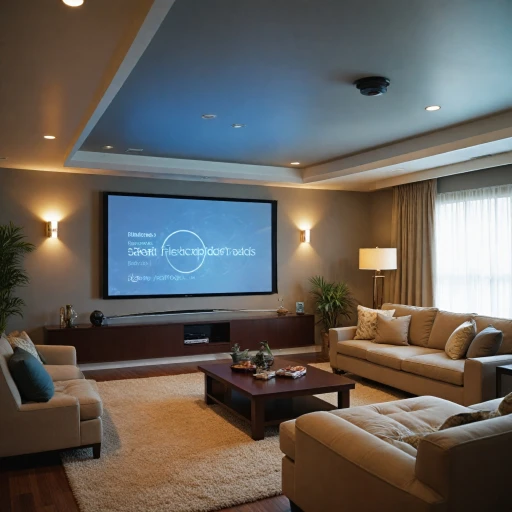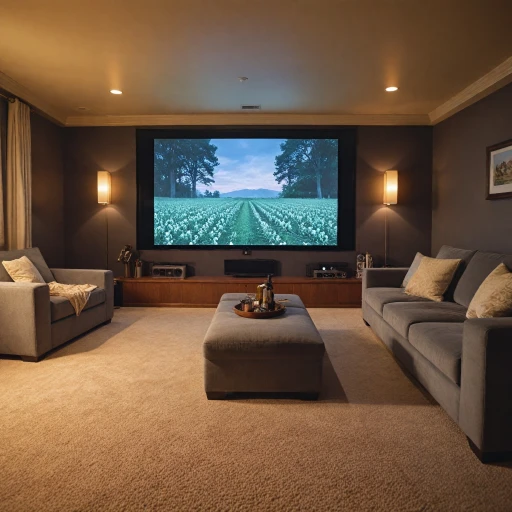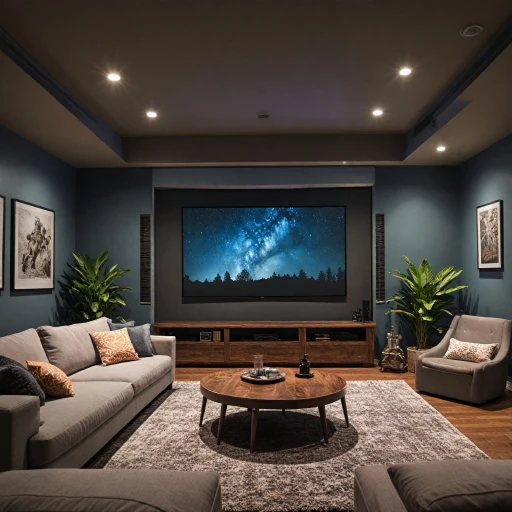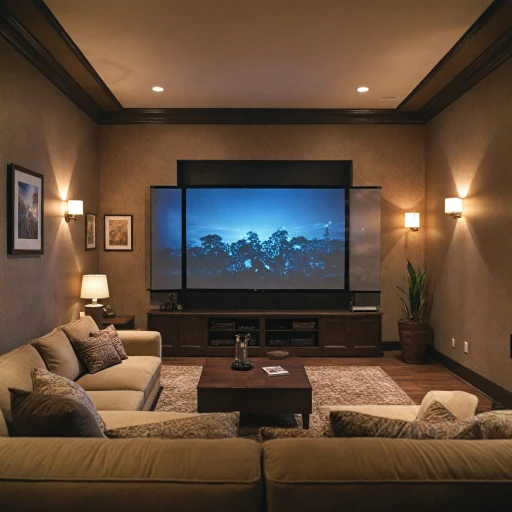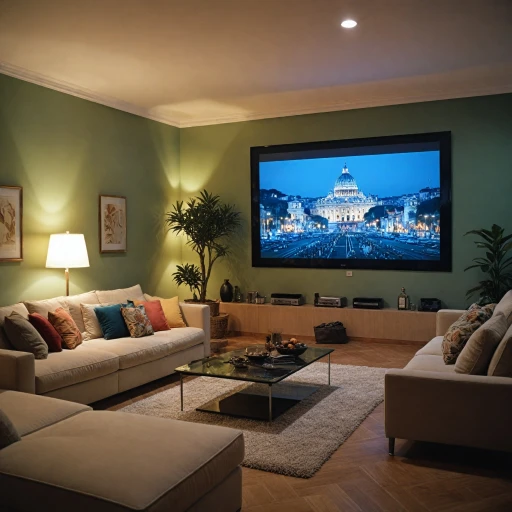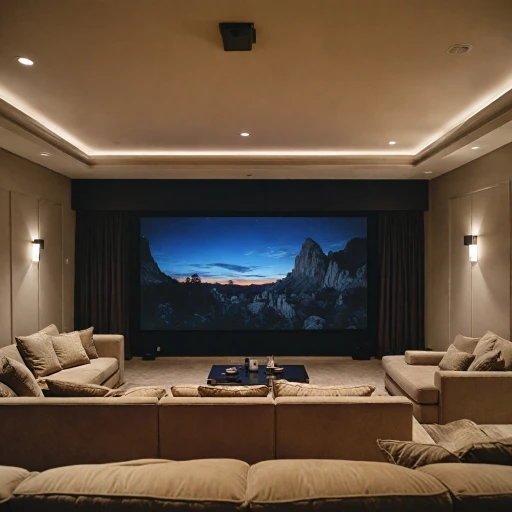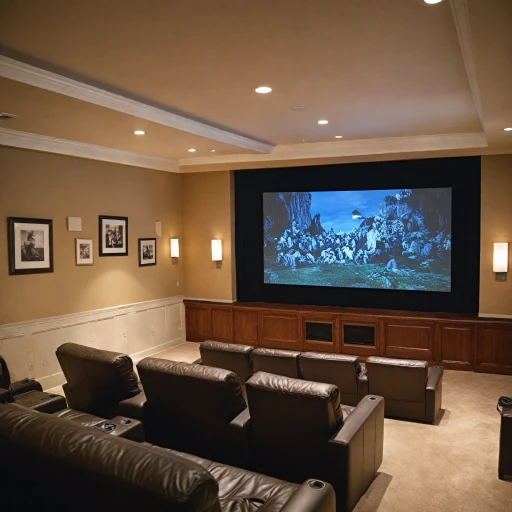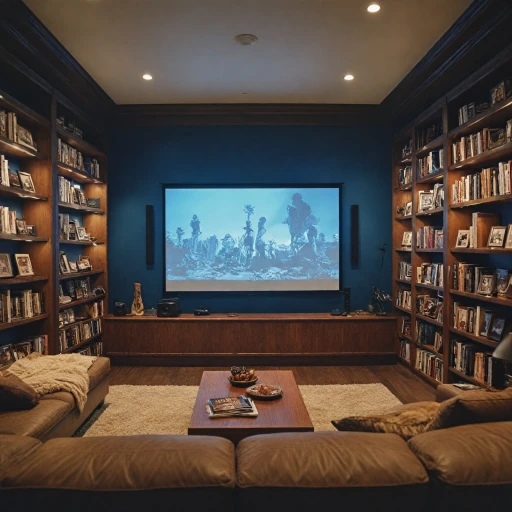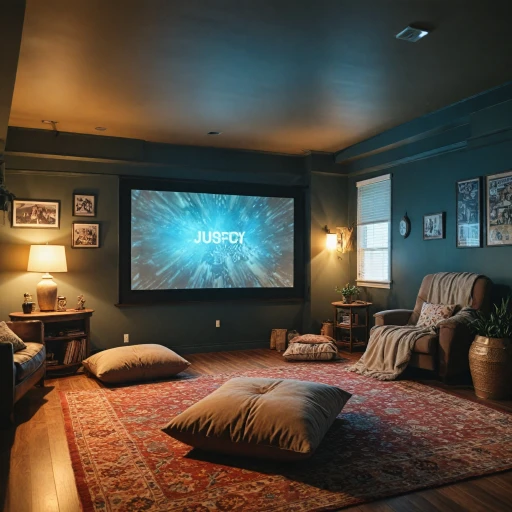
Understanding Roll-Up Projector Screens
Decoding the Roll-Up Projector Screen
The roll-up projector screen is a versatile solution in the realm of home theater projections. Many enthusiasts are drawn to it for its space-saving benefits and convenience. This type of screen rolls up and down for use, making it a practical choice for people who need a temporary or less permanent setup. When not in use, it can be neatly stored away, keeping your space tidy.
Whether it's a manual model or a more advanced motorized version, the roll-up projector screen comes in various functionalities designed to suit different preferences and budgets. You may opt for a matte white or light rejecting surface, which affects the projection’s image quality under various lighting conditions. Brands like Elite Screens and Draper offer various models to consider, each promising different facets of quality and performance.
The beauty of the roll-up screen lies in its portability and flexibility. One can easily move it wherever required, often making it a favorite among those who use ultra short throw projectors or prefer a portable projector system. Additionally, if you're thinking about investing in a roll-up screen, factors such as price, quality, and gain should be key considerations in your decision-making process, alongside the ambient light of your viewing environment.
Explore more about experiencing cinematic magic with versatile products like this in an insightful blog on 100-inch movie screens.
Benefits of Using a Roll-Up Projector Screen
Transforming Your Viewing Experience with Roll-Up Screens
Roll-up projector screens offer numerous benefits for anyone looking to elevate their home theater experience. By understanding the advantages that come with these screens, you can make an informed decision tailored to your needs. Consider the following benefits when opting for this type of projection screen:- Space-Saving Design: One of the most significant advantages of roll-up screens is their ability to save space. Being easily retractable, they make it convenient to have a large screen without occupying your room’s valuable real estate. This makes them ideal for rooms where space is a premium.
- Cost-Effectiveness: In terms of price, roll-up screens often offer a more affordable alternative compared to their fixed frame and motorized counterparts. This cost-effectiveness makes them a popular choice for those who seek to balance quality and budget.
- Versatile Setup: The manual and portable nature of many roll-up models allows them to be used in various environments. Whether you prefer a top motorized or manual tab tension operation, these screens accommodate different requirements.
- Enhanced Image Quality: With features like gain control, matte white surfaces, and light rejecting capabilities, roll-up screens can enhance your viewing experience by providing bright and crisp images. Ideal for combating ambient light in less than ideal settings.
- Perfect for Various Projector Types: Designed to work with different projector configurations such as short throw or ultra short throw projectors, these screens offer excellent flexibility for diverse setups.
- Easy Maintenance: Most roll-up screens are made with high-quality materials that ensure durability, requiring minimal effort for cleaning. This ensures the screen maintains optimal performance over time.
Choosing the Right Roll-Up Projector Screen for Your Space
Guide to Selecting the Perfect Roll-Up Screen
When you're ready to dive into the world of roll-up projector screens, the selection process can initially seem daunting. Understanding what features to look for is essential in choosing the right model that will enhance your viewing experience. First, consider the type of projector you own. Whether you're using ultra-short throw projectors or traditional throw projectors, certain screens complement specific projector types better. For examples, light rejecting screens are optimal if you're dealing with higher ambient light conditions. Next, think about the dimensions of your space. A portable or manual screen might be an ideal choice if you need flexibility or are working within a smaller environment. Portable screens are easily moved or stored, providing functionality alongside quality viewing. Material and finish also play a critical role. Matte white finishes are a popular option due to their ability to deliver high-quality projection and excellent light diffusion, resulting in superb picture quality. If you're concerned about ambient light, you might want to explore black or gray screens, which can offer significant benefits in color contrast and depth. Consider the gain—how reflective the screen material is. A higher gain can be beneficial in light-heavy environments. Lastly, factor in the type of mechanism that suits your needs. While manual options are budget-friendly, motorized projector screens offer convenience with remote functionality. If your focus is on a hassle-free experience, a motorized setup might be the perfect fit. Brands like Elite Screens and Draper offer varying models and prices, making it easier to find a model within your budget. For additional insights on choosing what's best for your setup, check out our blog about selecting the right mount for your home theater projector. Keep in mind the compatibility between your projection screen and the projector itself to make the most of your home theater system.Installation Tips for Roll-Up Projector Screens
Setting Up Your Roll-Up Projector Screen
Installing a roll-up projector screen requires careful planning and a precise process to ensure the best projection quality and user experience. Here are key tips to consider when setting up your screen:
- Select the Right Location: Choose a wall or ceiling with minimal ambient light interference to mount your screen. Ensure the area is free from obstacles that might affect projection quality. Consider using a matte white screen surface to further enhance image clarity.
- Measure Your Space: Accurately measure the space where you plan to install the screen. This will help you choose the right size and model that complements your room and projector capabilities. Remember that ultra short throw projectors require less distance.
- Determine the Screen Type: Decide between a manual or motorized roll-up screen according to your needs and budget. While manual screens are usually more affordable, motorized versions can offer convenience and a sleeker, more sophisticated look.
- Pay Attention to Screen Gain: Opt for a screen with the right gain for your projector and room conditions. A higher gain can enhance brightness but may reduce viewing angles, while a lower gain offers wider viewing angles with slight reductions in luminance.
- Install with Precision: Follow the manufacturer's instructions closely during installation to ensure a smooth and secure setup. If using a screen stand, check compatibility with your screen’s item number and weight. Using elite screens known for quality can assure long-term reliability.
- Consider Light-Controlling Additions: In rooms with uncontrolled light sources, consider ambient light rejecting screens that can significantly enhance viewing experiences even in challenging environments.
By keeping these pointers in mind, you can set up your roll-up projector screen effectively, ensuring an enhanced viewing experience that brings your home theater to life. For added insights, you may want to explore how sound permeable screens can enhance your audio-visual arrangements.

